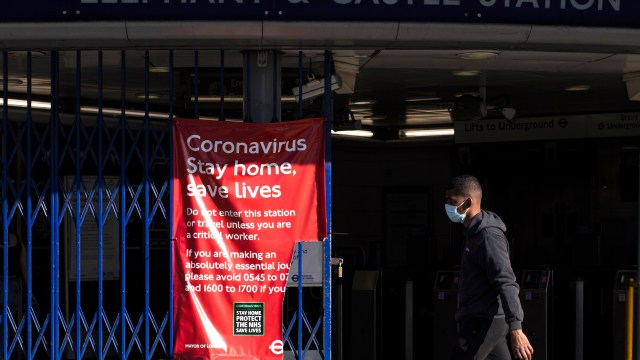88.1% of NYC coronavirus patients put on ventilators died

Image source: Bryan R. Smith/Getty
The scarcity of ventilators for COVID-19 patients has been one of the frightening problems facing medical professionals during the pandemic. The possibility of having to choose who gets a ventilator and who doesn’t has been one of the things keeping them, and us, up at night.
Even so, the scarce data on the device’s success rate at resolving COVID-19 infections has been concerning. Now a preliminary study of 5,700 patients hospitalized with COVID-19 in the New York City area finds that 88.1% of patients who go on ventilators don’t survive.
There are a few caveats that are important to keep in mind:
- This is preliminary data, and there are many COVID-19 patients currently on ventilators who may yet survive and eventually lower the study’s mortality rate.
- It’s impossible to know if the study’s conclusion reflects the inherent limitations of ventilator treatment for COVID-19, or if it indicates that the medical facilities tracked were so overwhelmed that the quality of care was inescapably compromised.
- This study reflects the facilities of one health network in one area, and we’ll know more as other domestic and international locations’ statistics become available.
The study was published April 22, 2020 in JAMA.

Image source: Vadym Stock/Shutterstock
The data collected for the study
The study looked at outcomes at hospitals in Northwell Health, the largest academic health system in New York. The system serves roughly 11 million people in Long Island, Westchester, and New York City.
12 acute-care facilities supplied data on 5,700 patients, all of whom had been hospitalized with “confirmed severe acute respiratory syndrome coronavirus 2 (SARS-CoV-2) infection by positive result on polymerase chain reaction testing of a nasopharyngeal sample.”
The period covered in the study ran from March 1, 2020 through April 4, 2020 and includes all patients who had exited hospital care at that point, either by leaving the facilities or by dying there. As noted above, the study doesn’t include patients remaining in hospital at the close of April 4.
The data collected includes:
- demographic information (race was self-reported)
- comorbidities
- triage (initial diagnostic) vitals
- home medications
- initial and subsequent lab tests, electrocardiogram measurements
- in-patient medications
- treatments, including ventilation and kidney replacement
- outcomes

Image source: Angela Weiss /Getty
What the data showed
Admission
- The median age of admitted patients was 63.
- 60.3% of those admitted identified as male and 39.7% as female.
- The most common comorbidities were hypertension (56.6%), obesity (41.7%), and diabetes (33.8%).
- Of those admitted, 21% died.
Treatment
- More patients in the 18-to-65 age group compared with the older-than-65 years age group were treated in the ICU or received ventilation.
- 14.2% of patents admitted were treated in intensive care.
- 12.2% received invasive mechanical ventilation.
- 81% received kidney replacement therapy.
Ventilator patients
- The overall mortality rate for patients on ventilators was 88.1%.
- In the 18-to-65 age group, the mortality rate was 76.4%.
- In the older-than-65 age group, the mortality rate was 97.2%.
- No ventilator patients younger than 18 died.
No panacea
The sad and disturbing truth, from this study and others, is that being put on a ventilator as treatment for COVID-19 constitutes a last-ditch attempt at lifesaving, and not a promising one. We understand that medical care has its limitations, and COVID-19 serves as a heartbreaking reminder of that reality.





